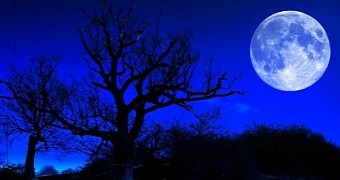A rare blue moon will shine high over our heads this coming Friday, July 31. Except it won't look blue, not even in the slightest. Well, not unless a volcanic eruption happens in the next couple of days.
Confused? Don't be. There is no black magic involved, just good old folklore sprinkled with enough misunderstandings to make the perfect headline-grabbing story.
How can a blue moon not be blue?
When they say a rare blue moon will very soon be upon us, astronomers don't mean that our planet's natural satellite will suddenly and without warning turn the color blue.
Rather, they mean that, instead of just one, as is customary, this year's July will witness two full moons. The first happened on the 2nd day of the month. The other, i.e. the gloomy-sounding blue moon, will happen on the 31st.
Plainly put, a blue moon is merely the second full moon in a month. There is nothing weird or mystical about it. Just our planet's satellite going about its business in the sky.
As for how the second full moon of a month came to be known as a full moon, blame Sky & Telescope writer James Hugh Pruett, who, back in 1940, published an article describing it as such based on his interpretation of folklore.
The moon does sometimes turn blue
The moon we'll get to see this coming Friday will most likely be its old, gray-colored self, but this does not mean moons that are actually and literally blue are an impossibility.
Au contraire, the moon's color is easily altered following volcanic eruptions and wildfires that saturate Earth's atmosphere with particles that block red light and only allow blue light to pass through.
Such a blue moon appeared back in 1883, in the aftermath of the eruption of the Indonesian volcano Krakatoa, and also in 1983, following the eruption of the El Chichon volcano in Mexico.

 14 DAY TRIAL //
14 DAY TRIAL // 